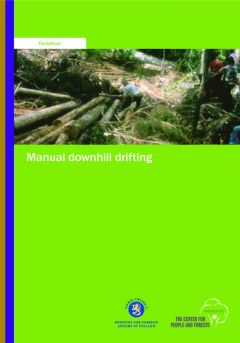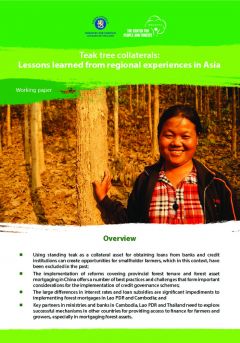Location
RECOFTC
RECOFTC is derived from an abbreviated form of the organization's legal name, Regional Community Forestry Training Center for Asia and the Pacific. Formerly the organization was known as RECOFTC – The Center for People and Forests.
RECOFTC – The Center for People and Forests is an international not-for-profit organization that focuses on capacity building for community forestry in the Asia Pacific region. It advocates for the increased involvement of local communities living in and around forests - some 450 million people in Asia-Pacific - in the equitable and ecologically sustainable management of forest landscapes.
The Regional Community Forestry Training Center for Asia and the Pacific (RECOFTC) opened in Bangkok, Thailand, in March 1987 with support from the United Nations Food and Agriculture Organization, the Government of Switzerland (through the Asian Development Bank), and Thailand's Kasetsart University.
Community forestry is widely acknowledged as a powerful solution for many of the challenges facing local people and the wider society, especially in improving rural livelihoods, enhancing community governance and empowerment, transforming forest-related conflict, protecting and enhancing the environment, and helping to fight climate change. As a capacity-building organisation, RECOFTC improves the ability of people and organisations to conduct community forestry effectively and sustainably.
RECOFTC works toward its mission through four thematic areas:
- expanding community forestry
- people, forests and climate change
- transforming forest conflict
- securing local livelihoods.
Members:
Resources
Displaying 146 - 150 of 485Community-based Production Forest: A Viable Alternative Modality in Cambodia
This brief summarizes the different approaches for the forest inventory needed for the community forestry management plan (CF-MP) were tested to compare their accuracy and efficiency. These approaches included: a) the official method envisioned in the national community forestry guidelines, b) a new type of plot layout called the K-tree method and c) the use of the diameter at breast height (DBH) to height relationship method.
Appropriate Small-scale Forest Harvesting Technologies for Southeast Asia: Rubber-tracked Mini-skidders
The Jonsereds Iron Horse (Swedish Järn Hästen) was the irst commercially available rubber-tracked mini-skidder (crawler) to appear in Scandinavian forest operations in the early 1980s. It was developed from smaller all-terrain crawlers, originally designed for use in hunting to transport moose and other large game over long distances.Yanmar bamboo crawler with engine in reverse position and clamping device for bamboo poles was used in trial harvesting in Bokeo, Lao PDR.
Appropriate Small-scale Forest Harvesting Technologies for Southeast Asia: Manual Downhill Drifting
Steep-slope harvesting probably poses the biggest challenges in forest harvesting throughout the world. Traditionally, on slopes above 30 percent, gravitational transport is applied in manual harvesting operations by simply sliding logs downhill.
Teak Tree Collaterals: Lessons Learned from Regional Experiences in Asia
This brief gives an overview of how using standing teak as a collateral asset for obtaining loans from banks and credit institutions can create opportunities for smallholder farmers as well discussions on the implementation of reforms covering provincial forest tenure and forest asset mortgaging in China that offers a number of best practices and challenges that can be considered in the implementation of credit governance schemes in the ASEAN region.
Appropriate Small-scale Forest Harvesting Technologies for Southeast Asia: Hand Tools
Hand tools are the most commonly used for subsistence or household use when harvesting bamboo or fuelwood. Axes, two-man handsaws and other hand tools are presented and discussed in this factsheet.






